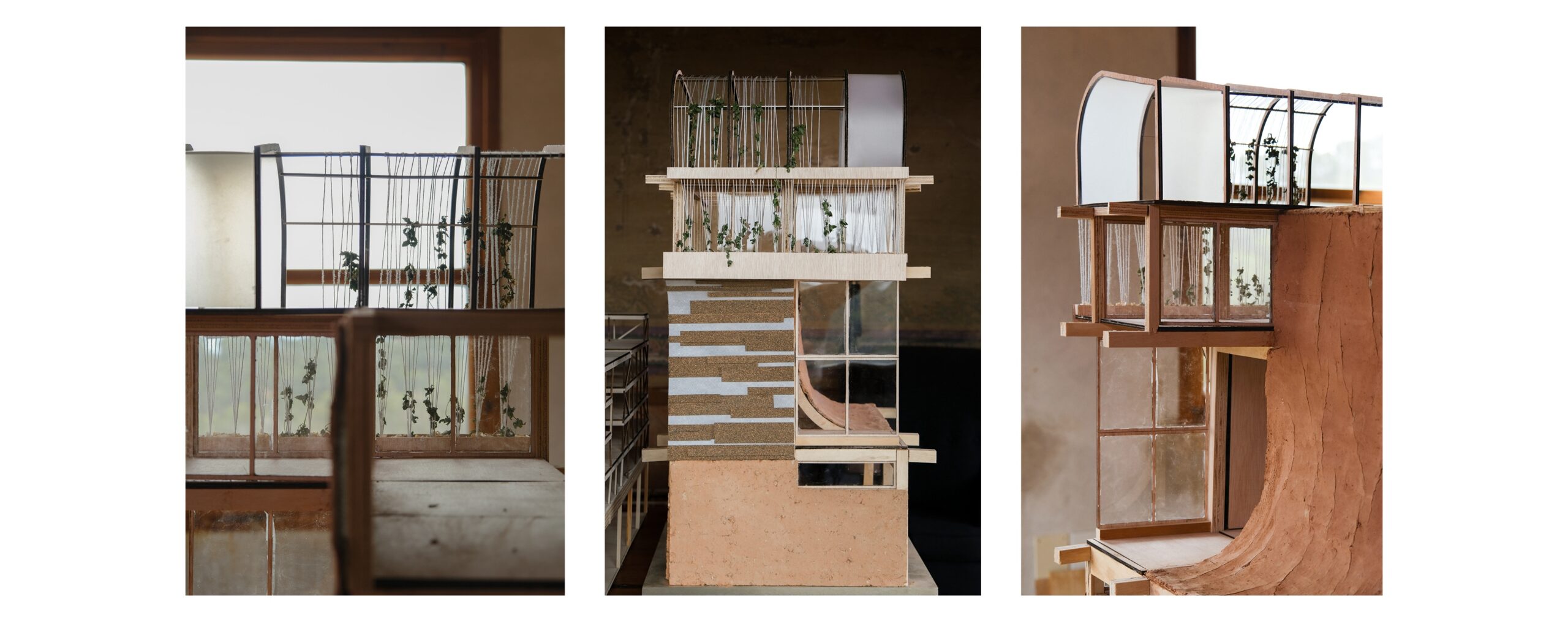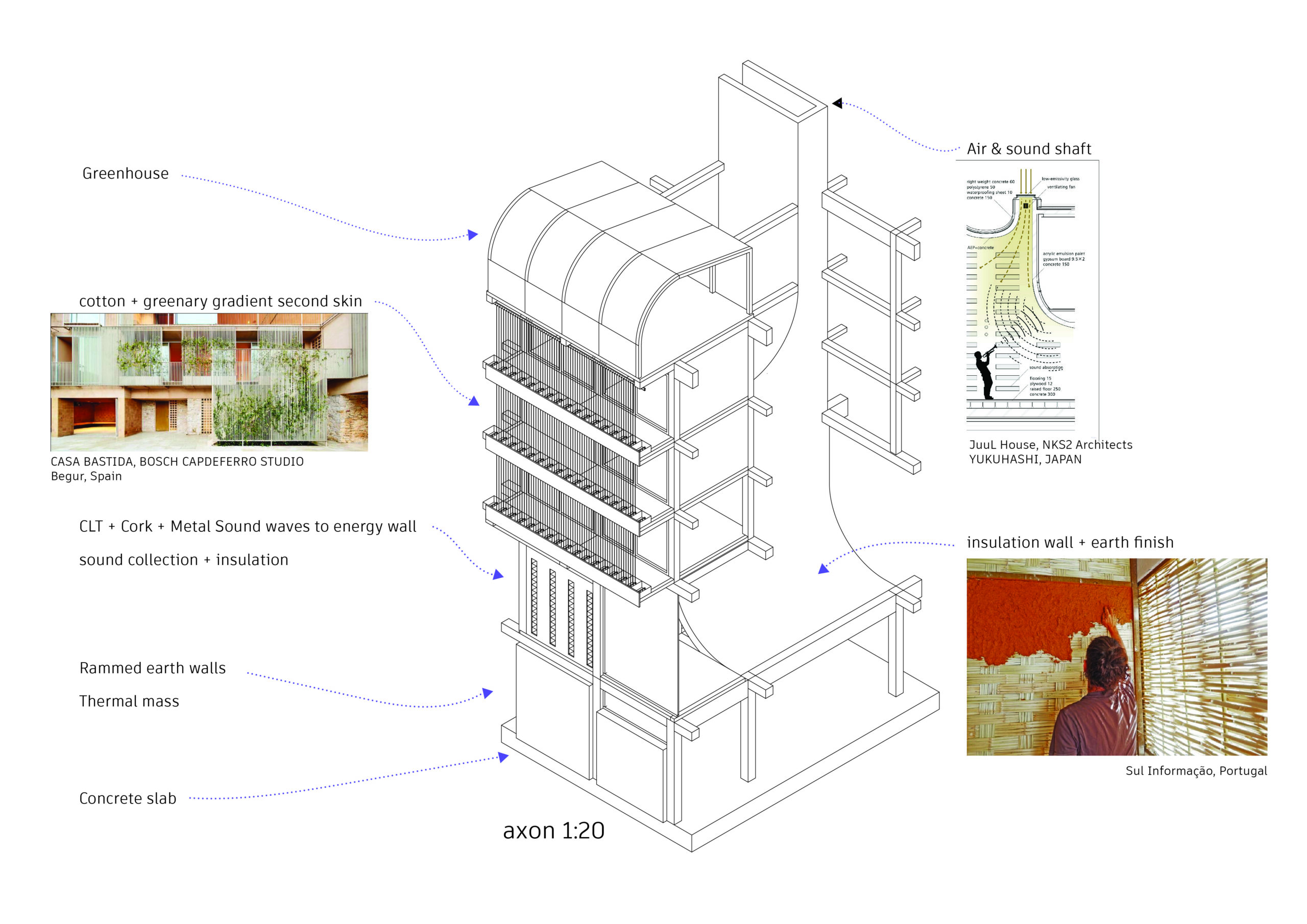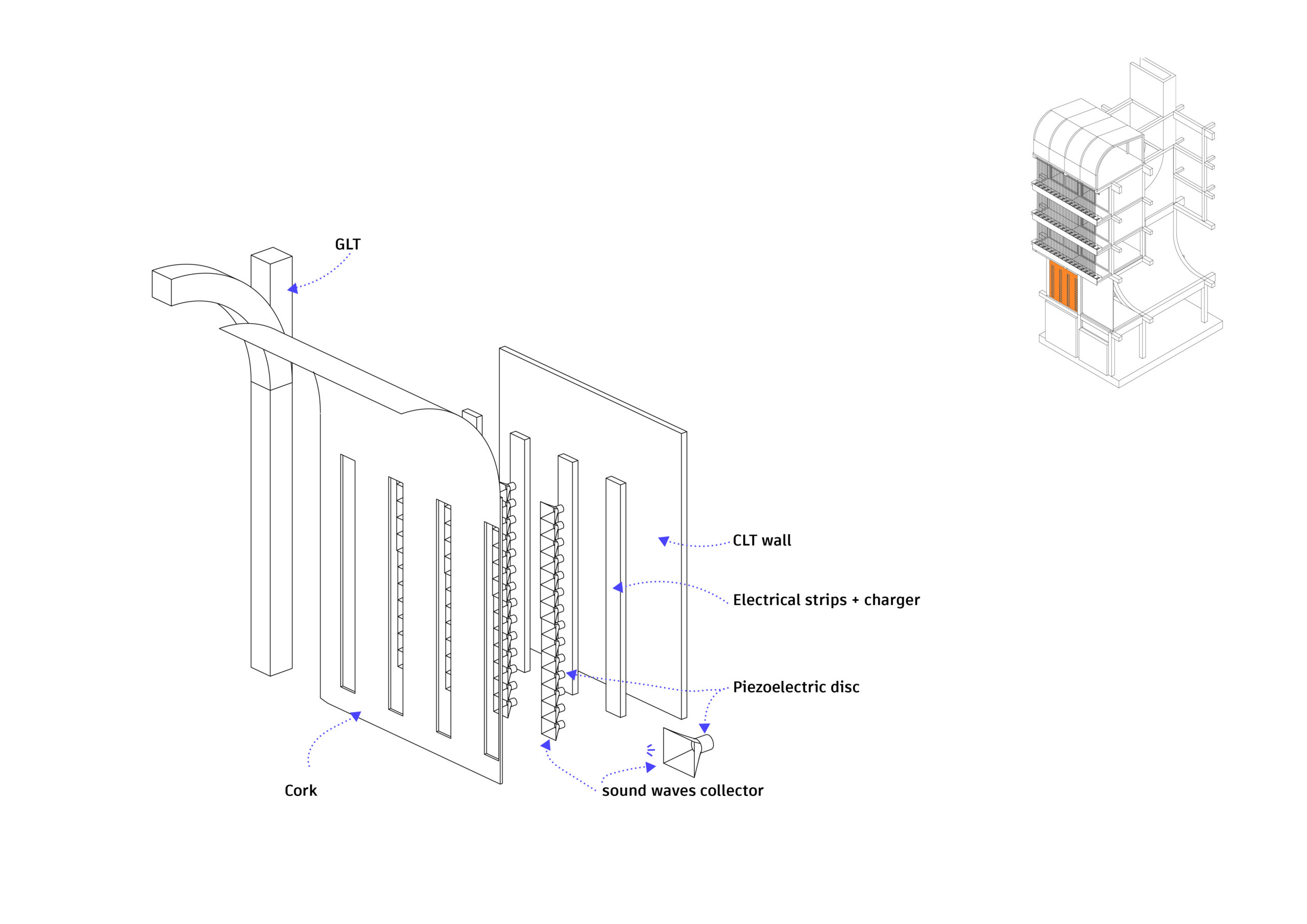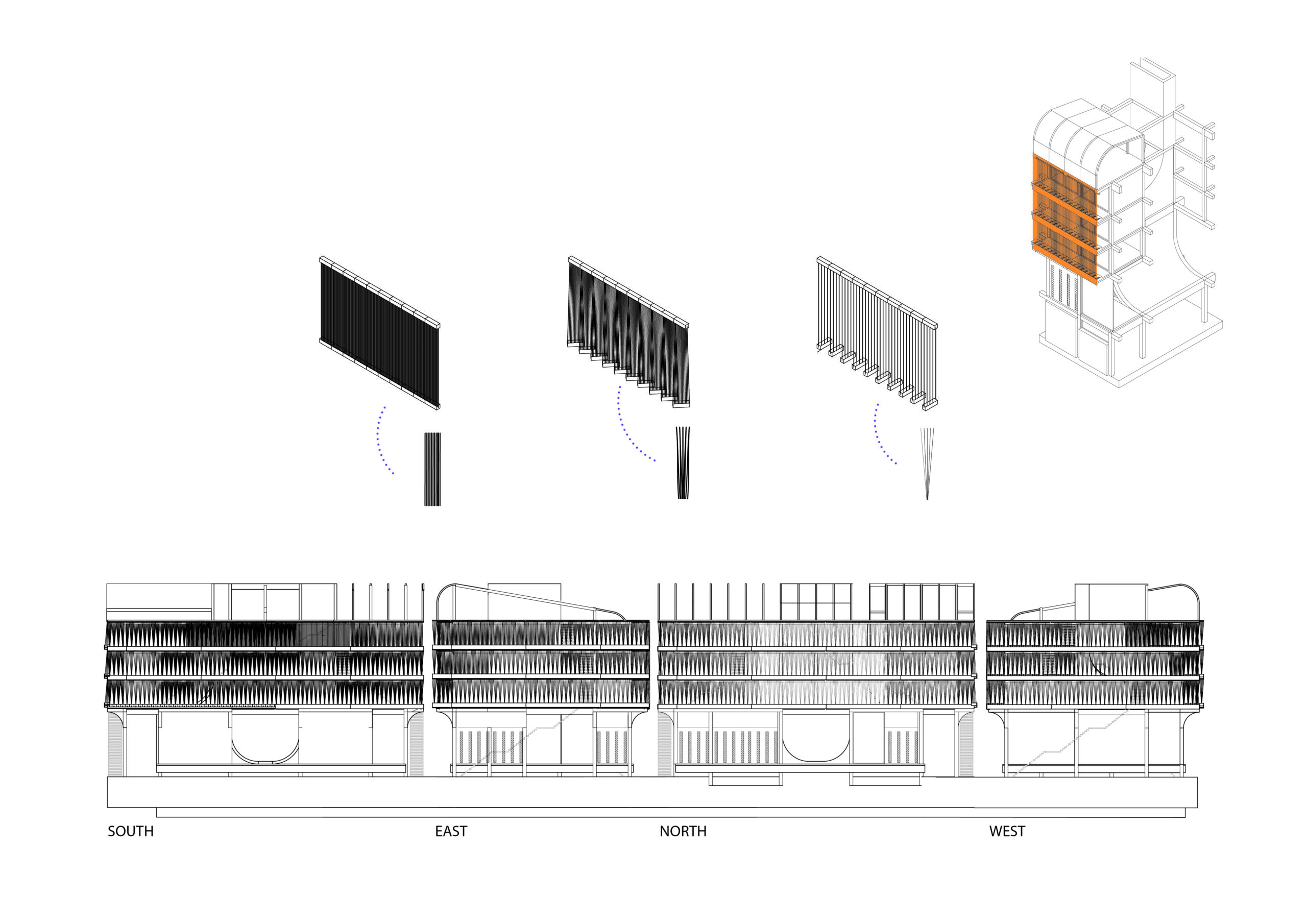The envelope of the building serves as a multifaceted entity, acting as a secondary skin that embodies both functionality and aesthetics. At ground level, it harnesses the ambient sound of the street, converting it into energy, while higher up, a dynamic string facade adorned with greenery serves as both a sound absorber and a solar shading element. Inspired by the rammed earth cores within the structure, the facade’s arching contours not only harmonize with the building’s internal features but also effectively inhibit upward sound transmission.


Section from the Norther or main road side of the building was chosen for the further study.

The building’s envelope is intricately intertwined with its internal spaces, particularly the curved earth-finished cores where louder musical activities occur, benefiting from the curvature for enhanced acoustics.
Transitioning from bottom to top, the sunken ground level features rammed earth walls wraping the perimeter of the large-scale industry, with slender openings at the top that allow natural light into the basement.
Ascending to the elevated ground level, the facade serves either as glazed surfaces or as a medium for energy production from sound. It incorporates slender strips of metal to reverberate sound and capture it effectively, complemented by cork strips to absorb excess noise and foster a comfortable indoor environment.
Strings function as shading elements and supports for climbing plants, creating a harmonious second-skin facade alongside glazing or solid walls further within the apartments. This interstitial space fosters a gradual transition, evoking an almost outdoor atmosphere for circulation and communal activities.
The roof seamlessly extends the facade’s design, alternating between string-covered sections and greenery or adopting a greenhouse configuration to further integrate with the building’s aesthetic and environmental objectives.



